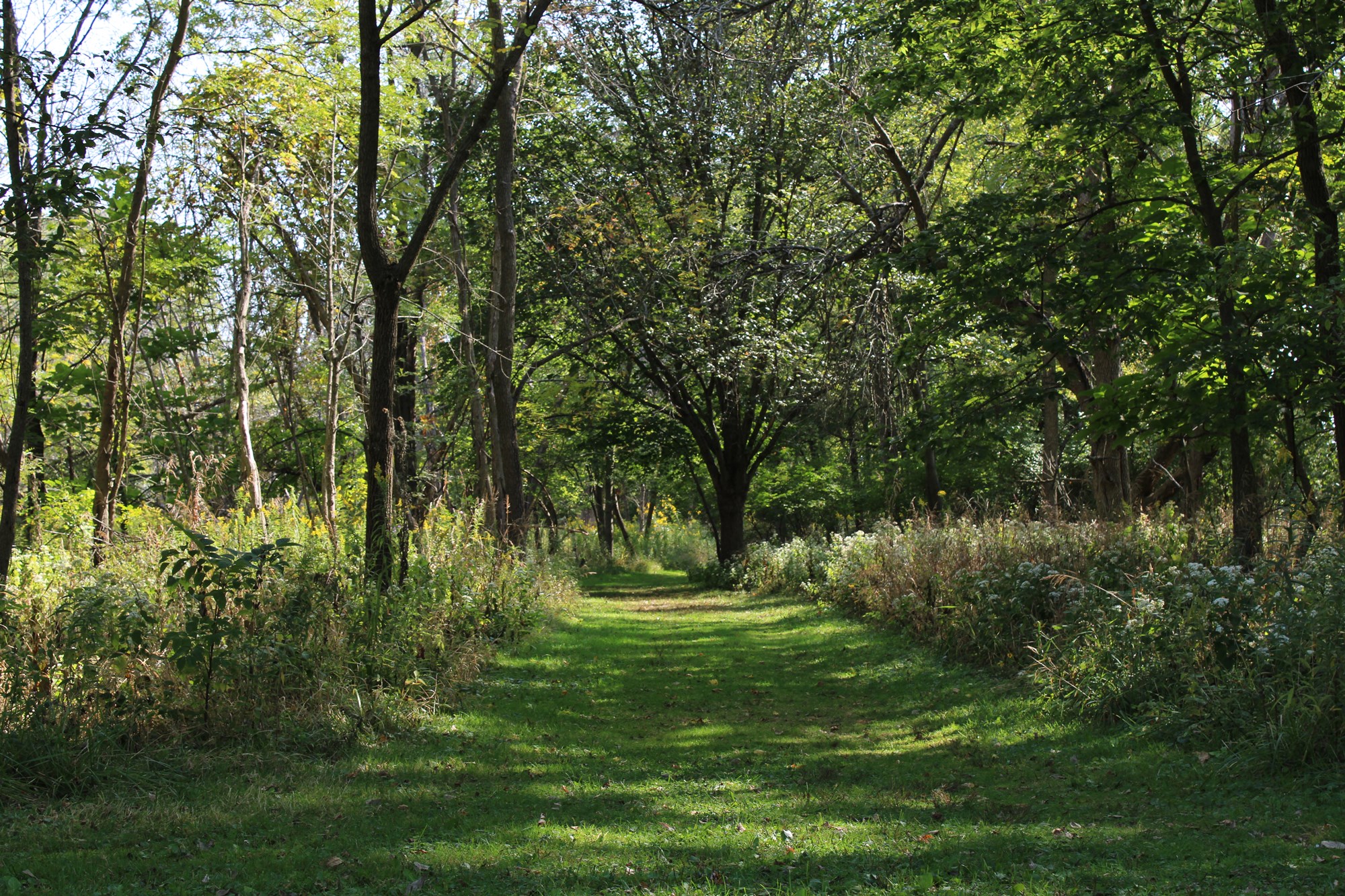
Our goal for these natural areas is to restore areas characteristic of Illinois' most diverse habitats. Restoration includes planting and seeding native plants, removing nuisance plants, and conducting prescribed burns to encourage healthy growth.
Natural areas are open sunrise to sunset. Naturalists are available, and classes are designed for all age groups and interests. Nature programs utilize these areas with school groups, special request programs, and the public. To inquire about programs and services, call the Anita Purves Nature Center at 217-384-4062. Help us maintain these natural areas by not collecting items, walking pets or cycling.
What is a Natural Area?
The Urbana Park District protects, restores and manages natural areas. By "natural area", the District refers to an area that is preserved or restored to a state that is characteristic of Illinois' native habitats, like prairies and woodlands. These designated areas include Busey Woods in Crystal Lake Park, much of Meadowbrook Park, Weaver Park, and the Perkins Road site. Passive recreation such as photography, hiking, and birding in small groups is encouraged. Collecting of plants, wildlife and natural items is prohibited.
Benefits of Natural Areas?
Natural areas maintain ecosystem balance and build resilience to climate change. They provide "ecosystem services" like improving water and air quality by absorbing excess water and carbon dioxide. Management of natural areas promotes biodiversity by providing habitats and resources critical for supporting a wide variety of plants and wildlife.
The beauty and diversity of natural areas is inspiring. Observing wildlife, walking outside, and other interactions with nature are proven to improve human health and well-being. Natural spaces offer a variety of social, mental, and physical benefits. These include stress reduction, lower blood pressure, decreased depression and anxiety, and relief from the symptoms of Attention Deficit Disorder.
Why No Dogs?
Dogs–on leash or off–are a threat to wildlife. Wild animals perceive dogs as predators. This interrupts their normal behaviors, like feeding or resting, and causes them stress. Repeated stress can result in long-term decreases in growth, reproduction, and protection against disease. A dog's scent repels wildlife even after the dogs are gone. Dog urine "marks” territory, which can make it undesirable for wildlife.
Why No Bikes?
Bikes disturb wildlife habitats. Many of the District’s natural areas are seasonally wet environments, so the impact of bikes on the soft trails can make paths unusable for walkers.
Why might plants or trees be removed from natural areas?
Restoring and preserving natural areas takes a lot of ongoing work! Restoration and maintenance projects often include removing overcrowded or unwanted plants and trees, like bush honeysuckle and European alder, which don’t belong in Illinois prairies and woodlands. To learn more, visit https://www.urbanaparks.org/parks/natural-areas/projects/
Busey Woods
Busey Woods is a 59-acre bottomland Oak-Hickory forest. It is located at the north end of Crystal Lake Park with an entrance just west of the Anita Purves Nature Center. This natural area is notable for its native spring wildflowers, bird watching opportunities and a 1/3-mile elevated boardwalk. You can see a running list of species found in Busey Woods here.
Busey Woods is a remnant of the historic "Big Grove", a large woodland area that grew between the drainage of the Saline Branch and the Salt Fork of the Vermilion River. This grove--an island of trees in the midst of a sea of prairie--once extended from Urbana to Rantoul and from the Saline Branch to the Salt Fork. It was originally an area comprising 10 square miles of trees surrounded by wet tallgrass prairie growing on soils of glacial origin. Busey Woods and a section of the district's Weaver Park are the only surviving parcels of the Big Grove that are open to the public.
Staff at the Anita Purves Nature Center utilize Busey Woods for a wide variety of programs for school kids and the public. The Illinois Department of Natural Resources recognizes Busey Woods as a Watchable Wildlife Site. Find a Busey Woods Trail Map here. Learn more about the wide variety of species found in Busey Woods here: https://www.urbanaparks.org/programs/busey-woods-bioblitz/
Weaver Park
With the help of volunteers, the Urbana Park District is restoring a variety of ecosystems at this quietly emerging park. Located south of the intersection of Main Street and Smith Road, the 60-acres of Weaver Park contains:
- 35 acres planted with prairie and native grasses
- An award-winning watershed management wetland
- A 5-acre woodland/savanna restoration
- Parking for the Kickapoo Rail Trail
Spomer Prairie in Meadowbrook Prairie
Prairie was the dominant natural feature of Illinois before the settlers arrived. Since 1978, the Urbana Park District and countless volunteers have worked to re-create approximately 80 acres of Illinois native landscape. Visit Meadowbrook Park in south Urbana, along Windsor Road and Race Street, and explore and enjoy a part of Illinois’ natural history that has all but disappeared.
Perkins Road Wet Prairie
With the assistance of the Illinois Department of Natural Resources Conservation 2000 program, the district is restoring 35 acres behind the dog park. Once restored, the Perkins Road Wet Prairie will include prairie and wetland environments for wildlife observation, environmental education programs and recreation. For a sneak peek at this developing natural area, attend a "Connecting You to Nature" Hike.